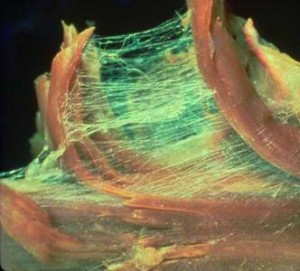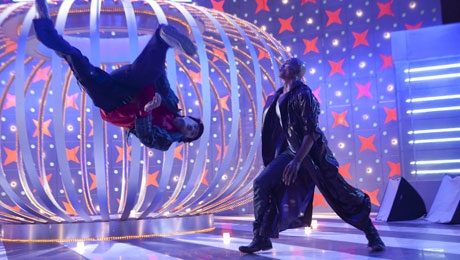Dr. Ken Fish inspired a very interesting thread on Rum Soaked Fist which I’d like to draw readers attention to.
(It takes a little while to get going and is up to 7 pages as I'm posting.) Fortunately, I’ve been banned from posting on the site without explanation. Frankly that’s a good thing because it required a lot of effort to monitor comments from people who regularly misunderstood and therefore freaked-out about comments I made.
Fish’s disturbing premiss is that the training secrets of Chinese martial arts masters are usually withheld at the beginning of a person’s training, not later after many years of study as is often assumed. By withholding certain types of intense, precise, and personally coached training at the beginning, a master can insure that a student stays forever at an intermediate level.
In other words, because of extensive sharing and the ease with which students change masters these days, many high level techniques have actually been written about and it has become quite possible to learn these methods, but without that more basic training these higher level techniques rarely if ever come to fruition.
It’s funny you know, from when I first started studying martial arts all the way into the early 90’s, if you wanted to insult a student from another school or someone else’s master, you would say, “You lack basic training, If you just go back and practice the basics you will have a chance of improving.” The standard retort to this insult was made famous by Bruce Lee, “You have offended my family and the Shaolin Temple, you must have grown weary of living.”
What is most striking about the thread is that Fish gives Jackie Chan as the best example of someone who has unequivocally had this basic training. He explains that the training is
performative, it can be seen, and it is unmistakable. He then goes on to say repeatedly that anyone who has had professional level traditional Chinese Theater training has it, unequivocally. And that this basic training, ‘though quite rare in modern teachers of the arts, is widespread among all regional styles of Chinese theater and martial arts.
(Which, I might add, should be a clue to understanding it’s origins.)Naturally, I totally agree with him. But I would go further, I would say that a great number of higher level skills, concepts and training methods are directly accessible only through seeing the martial arts within a matrix of ritual-meditation and theater. Without accessing the original context, our only hope is
reverse engineering.
In other words, you can’t just
be tough, you have to
act tough! Bing Gong
Bing GongLet me try to give readers a better idea of what this
basic work (jibengong) is like by describing my own experience of learning it and trying to teach it. Kuo Lien-Ying was trained around the turn of the 20th Century in Beijing traditional theater arts, also known as Northern Shaolin. As the vicious mass movement to separate theater, religion and martial arts got underway, he moved into the martial arts camp, where he studied with many of the greatest artist of his time. He fled with the
Kuomintang to Taiwan in ’49 and then came to America in the 1960’s where my first teacher, Bing Gong, became his top Shaolin student.
Studying with Bing was a profound experience and we became very close.
 Ye Xiaolong
Ye XiaolongThe truth is that Bing, although he spoke very little, had a strong desire to pass on the essence of this art. But sadly, hardly anyone was willing to endure the training. He would have me do very simple movements over and over again in slightly different ways until my body permanently changed.
For instance, while I held the basic monk stance,
(see image below) he would order me to make small adjustments or movements while he introduced various forms of resistance. There were many eventual ‘benefits’ to this. So for example, after a time I could move my knee high enough and integrate it into my structure well enough that I could use it to block kicks to my ribs.
Take another example from Shaolin. While doing the second line of
Tantui (springy legs), which is a very straight forward punch, punch, punch-kick combination, Bing would have me freeze with my
 Paulie Zink
Paulie Zinkoutstretched leg up above hip level. Then he would have me move it higher and he would test it for connection or integration in various ways. And then we’d do the same on the other side--over and over, day after day, week after week. Again, until the ability was permanent.
Bing also kicked me a lot. He wouldn’t tell me how to get into a stance, he would kick me into it. Although I can point to a lot of different learning methods that I have experienced over the years which could account for the
gongfu in my legs, nothing else was really as profound as that.
As I’m sure readers can surmise, these things are not complex to teach or to learn, but actually getting the student to do the work is unusual. I guess I liked it when Bing kicked me because I never asked, “Why are you doing that?” nor did I respond emotionally by making a face as most students do. How do you explain to a student that they are not to make a face? Trying to explain it is like making a problem on top of a problem, it just doesn’t work.
I think anyone who has done professional dance training will understand this instinctively. As one of my dance teachers put it, “Some people know how to take corrections and some people don’t.”
I could say things about all of my teachers in regards to
jibengong, but I’m just going to mention two more, the first is Ye Xiaolong. Geroge Xu brought Ye over from Shanghai one Spring in the early 90’s because George himself wanted to learn from him and they both taught class together. But then suddenly in late May, George got his long awaited “Green Card” and shortly there after he flew to Europe to teach. He left Ye by himself to teach classes in San Francisco and arranged for us to get him back and forth from his house to the park. But as there was no translation, only two of us came to class for the whole Summer. He taught us for 100 days, everyday for about 3 hours. We concentrated on about five exercises which we did over and over. Ye constantly had his hands on us, making corrections, pushing, resisting, kicking and saying, “B
u hao,” (no good). We actually did a lot of push hands too, but it was never competitive, it was done as a kind of cooperative power stretch. The effects were permanent.
Paulie Zink deserves a mention here also because I believe he is an international living treasure specifically because he has the worlds largest collection of
jibengong. As he put it to me, “I don’t teach martial arts anymore because I have yet to find anyone who is willing to do the preliminary work.”
 Monk Clears His Sleeve - stance
Monk Clears His Sleeve - stance







 I just saw
I just saw 

 Both have fixed foot positions. The one top goes up and down. The one on the bottom goes forward and backward. They are both designed to take all arm and leg power out of the system as well as any size advantages or gravity/momentum/positioning advantages-- Thus leaving only "internal" mind-energy changes of the torso for generating force. What the practice reveals is all the possible things you could do that are wrong. This is really important because all those "wrong things," like tension in the shoulders, might seem like they are giving an advantage in a more dynamic or volatile exercise.
Both have fixed foot positions. The one top goes up and down. The one on the bottom goes forward and backward. They are both designed to take all arm and leg power out of the system as well as any size advantages or gravity/momentum/positioning advantages-- Thus leaving only "internal" mind-energy changes of the torso for generating force. What the practice reveals is all the possible things you could do that are wrong. This is really important because all those "wrong things," like tension in the shoulders, might seem like they are giving an advantage in a more dynamic or volatile exercise.

